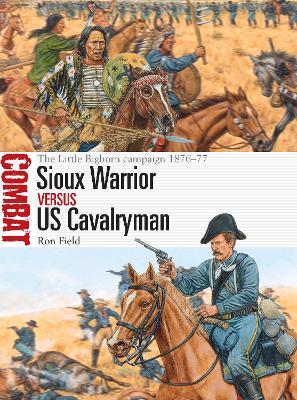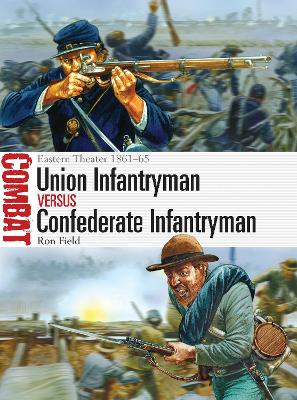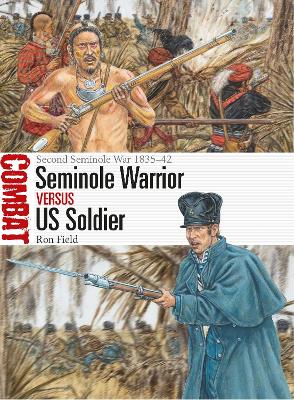Combat
2 primary works • 4 total works
Book 12
During the intense, sprawling conflict that was the American Civil War, both Union and Confederate forces fielded substantial numbers of cavalry, which carried out the crucial tasks of reconnaissance, raiding, and conveying messages. The perception was that cavalry's effectiveness on the battlefield would be drastically reduced in this age of improved infantry firearms. This title, however, demonstrates how cavalry's lethal combination of mobility and dismounted firepower meant it was still very much a force to be reckoned with in battle, and charts the swing in the qualitative difference of the cavalry forces fielded by the two sides as the war progressed. In this book, three fierce cavalry actions of the American Civil War are assessed, including the battles of Second Bull Run/Manassas (1862), Buckland Mills (1863) and Tom's Brook (1864).
Book 43
Following the discovery of gold deposits, in December 1875 the US Government ordered the indigenous population of the Black Hills in what is now South Dakota and Wyoming, the Sioux, to return to the Great Sioux Reservation. When the Sioux refused, the US Army sent forces into the area, sparking a conflict that would make Lieutenant Colonel George Custer, Chief Sitting Bull, Crazy Horse, and others household names around the world.
Examining a series of engagements in the Black Hills War, including Rosebud, Little Bighorn, and Slim Buttes, this fully illustrated study assesses the forces fighting on both sides in this momentous campaign, casting light on the origins, tactics, armament, and battlefield performance of the US Cavalry and their Sioux opponents at the height of the Indian Wars.
Examining a series of engagements in the Black Hills War, including Rosebud, Little Bighorn, and Slim Buttes, this fully illustrated study assesses the forces fighting on both sides in this momentous campaign, casting light on the origins, tactics, armament, and battlefield performance of the US Cavalry and their Sioux opponents at the height of the Indian Wars.
The enthusiastic but largely inexperienced soldiers serving on both sides in the Civil War had to adapt quickly to the appalling realities of warfare in the industrial age. Author Ron Field, an authority on the Civil War, investigates three clashes that illustrate the changing realities of combat. Pitched into combat after an exhausting march to reach the battlefield, newly recruited infantrymen of both sides clashed at First Bull Run/Manassas in 1861.Two years later, the outcome of the Civil War's pivotal battle at Gettysburg hung in the balance as the Confederate veterans of Pickett's Division mounted a set-piece attack on Union positions at 'The Bloody Angle'. In 1864, African-American troops fighting for the Union took part in a bloody assault on formidable Confederate positions at Chaffin's Farm/New Market Heights, outside Petersburg. This absorbing study casts light on what it was like to take part in close-quarters battle during the Civil War, as increased infantry firepower and an increasing reliance on prepared defensive positions spelled the end of close-order tactics in the conflict that shaped America.
During the 19th century, US forces confronted the Seminole people in a series of bitter wars over the fate of Florida. After the refusal of the Seminoles to move west to the Creek Reservation in Mississippi, the US government sent troops to bring Florida under federal control, marking the beginning of the Second Seminole War. On December 28, 1835, troops led by Major Francis Langhorne Dade were ambushed and massacred en route to Fort King. Two years of guerrilla warfare ensued, as the Seminoles evaded the US forces sent to defeat them. Ordered to hunt down the Seminoles, a US force led by Colonel Zachary Taylor incurred heavy losses at the battle of Lake Okeechobee (December 25, 1837), but the Seminoles were forced to withdraw. At the battle of the Loxahatchee River (January 24, 1838), forces led by Major General Thomas S. Jesup encountered a large group of Seminoles and met them with overwhelming numbers and greater firepower. Despite their stubborn efforts to resist the US military, the Seminoles were defeated and Florida became a state of the Union in 1845. This fully illustrated study assesses the forces fighting on both sides, casting light on the tactics, weaponry, and combat record of the Seminole warriors and their US opponents during the Second Seminole War.



